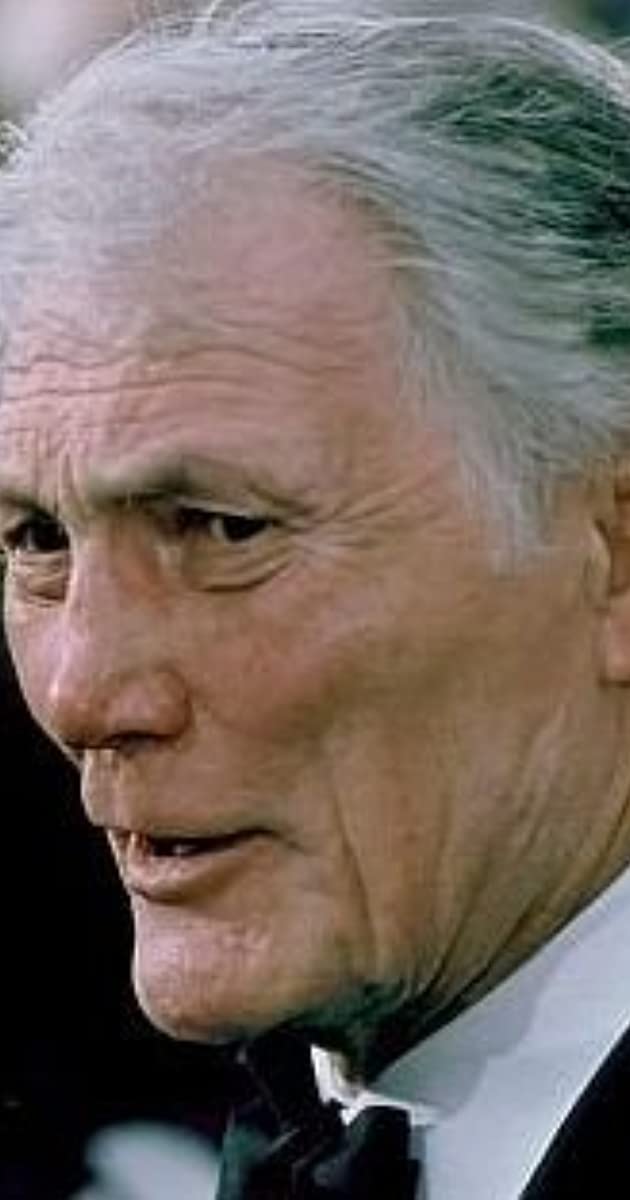
Jack Palance often exemplified evil incarnate on film — portraying some of the most intensely despised villains witnessed in 1950s westerns and melodrama, enhanced by his tall, powerful build, icy voice, and piercing eyes. He received two Best Supporting Actor nominations early in his career, but it would take a grizzled, eccentric comic performance 40 years later for him to finally grab the coveted statuette.
Of Ukrainian descent, Palance was born Volodymir Ivanovic Palahniuk (later renaming himself Walter Jack Palance) on February 18, 1920, in Lattimer Mines (Pennsylvania coal country), to Anna (nee Gramiak) and Ivan Palahniuk. His father, an anthracite miner, died of black lung disease. The sensitive, artistic lad worked in the mines in his early years but averted the same fate as his father.
Athletics was his ticket out of the mines when he won a football scholarship to the University of North Carolina. He subsequently dropped out to try his hand at professional boxing. Fighting under the name “Jack Brazzo”, he won his first 15 fights, 12 by knockout, before losing a 4th round decision to future heavyweight contender Joe Baksi on December 17, 1940. With the outbreak of World War II, his boxing career ended and his military career began, serving in the Army Air Force as a bomber pilot. Wounded in combat and suffering severe injuries and burns, he received the Purple Heart, Good Conduct Medal, and the World War II Victory Medal. He resumed college studies as a journalist at Stanford University and became a sportswriter for the San Francisco Chronicle. He also worked for a radio station until the acting bug bit.
Palance made his stage debut in “The Big Two” in 1947 and immediately followed it understudying Marlon Brando as Stanley Kowalski in the groundbreaking Broadway classic “A Streetcar Named Desire”, a role he eventually took over. Following stage parts in “Temporary Island” (1948), “The Vigil” (1948) and “The Silver Tassle” (1949), Palance won a choice role in “Darkness of Noon” and a Theatre World Award for “promising new personality”. This recognition helped him secure a 20th Century-Fox contract. The facial burns and resulting reconstructive surgery following the crash and burn of his WWII bomber plane actually worked to his advantage. Hardly possessing the look of a glossy romantic leading man, Palance instead became an archetypal villain equipped with an imposing glare, intimidating stance and killer-shark smile.
He stood out among a powerhouse cast that included actors such as Richard Widmark, Zero Mostel and Paul Douglas in his movie debut in Elia Kazan’s Panic in the Streets (1950), as a plague-carrying fugitive. He was soon on his way. Initially billed as Walter Jack Palance, the actor made fine use of his former boxing skills and war experience for the film Halls of Montezuma (1951) as a boxing Marine in Richard Widmark’s platoon. He followed this with the first of his back-to-back Oscar nods. In Sudden Fear (1952), only his third film, he played rich-and-famous playwright Joan Crawford’s struggling actor husband who plots to murder her and run off with gorgeous Gloria Grahame. Finding the right menace and intensity to pretty much steal the proceedings without chewing on the scenery, he followed this with arguably his finest villain of the decade, that of sadistic gunslinger Jack Wilson who becomes Alan Ladd’s biggest nightmare in the classic western Shane (1953).
Throughout the 1950s Palance won good film roles such as those in Man in the Attic (1953) (his first lead), The Big Knife (1955) and the war classic Attack (1956). Mixed in were a few routine to highly mediocre parts in Flight to Tangier (1953), Sign of the Pagan (1954) (as Attila the Hun), and the biblical bomb The Silver Chalice (1954). In between filmmaking were a host of television roles, none better than his down-and-out boxer in Playhouse 90: Requiem for a Heavyweight (1956), a rare sympathetic role that earned him an Emmy.
Overseas in the 1960s, Palance appeared in biblical and war epics and in “spaghetti Westerns”. Also included in his 1960s foreign work was Jean-Luc Godard’s Le Mépris (1963). On television, he played a number of nefarious nasties to perfection, ranging from Dracula to Dr. Jekyll/Mr. Hyde. Into his twilight years he showed a penchant for brash, quirky comedy capped by his Oscar-winning role in City Slickers (1991), its sequel, and other films. He even played Ebenezer Scrooge in a TV-movie incongruously set in the Wild West.
Married twice, his three children — Holly, Brooke and Cody — all dabbled in acting and appeared with their father at one time or another. A man of few words off the set, he owned his own cattle ranch and displayed other creative sides as a exhibited painter and published poet. His last years were marred by failing health and the death of his son Cody from cancer in 1998. He died at age 86 at his daughter Holly’s home in Montecito, California.


